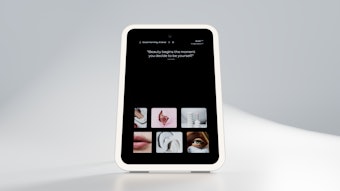
Characterizing Orbital Aging
A study published in the journal Plastic and Reconstructive Surgery (September 2022) by Shoaib Ugradar, M.D., et al., analyzed computed tomographic scans using highly accurate imaging software to characterize age-related changes to the orbit in isolation. Identifying changes to the orbit in isolation from other facial regions has been attempted in previous studies without great success, frequently yielding conflicting results.
Related: Periorbital Surgical Rejuvenation Improves Visual Perception of Aging
The case-controlled study included 120 participants (240 orbits) comprised of patients seen in an ear, nose and throat clinic. The participants were first separated by gender and subsequently divided into two age groups (20 to 30 years old and 60 to 75 years old), with 30 participants in each age group. The authors used three-dimensional reconstructions to measure bony orbital dimensions, volume of soft tissue (muscle and fat) and anterior globe position. To allow the inclusion of both orbits from each participant without any added bias, researchers used the generalized estimating equation.
Results
Researchers found that the bony orbit expands in females as they age, with participants exhibiting increases of the bony orbital volume (p < 0.05), fat volume (p < 0.01), and central width (p < 0.001) of the bony orbit. In addition, the position of the anterior globe among older female participants was considerably greater (p < 0.01). This was not the case among male participants, with the anterior globe position remaining the same regardless of age (p = 0.56). Fat volume (p < 0.0001) and central height (p < 0.03) in male participants increased with age, while the lateral rim moved posteriorly (p < 0.007).










